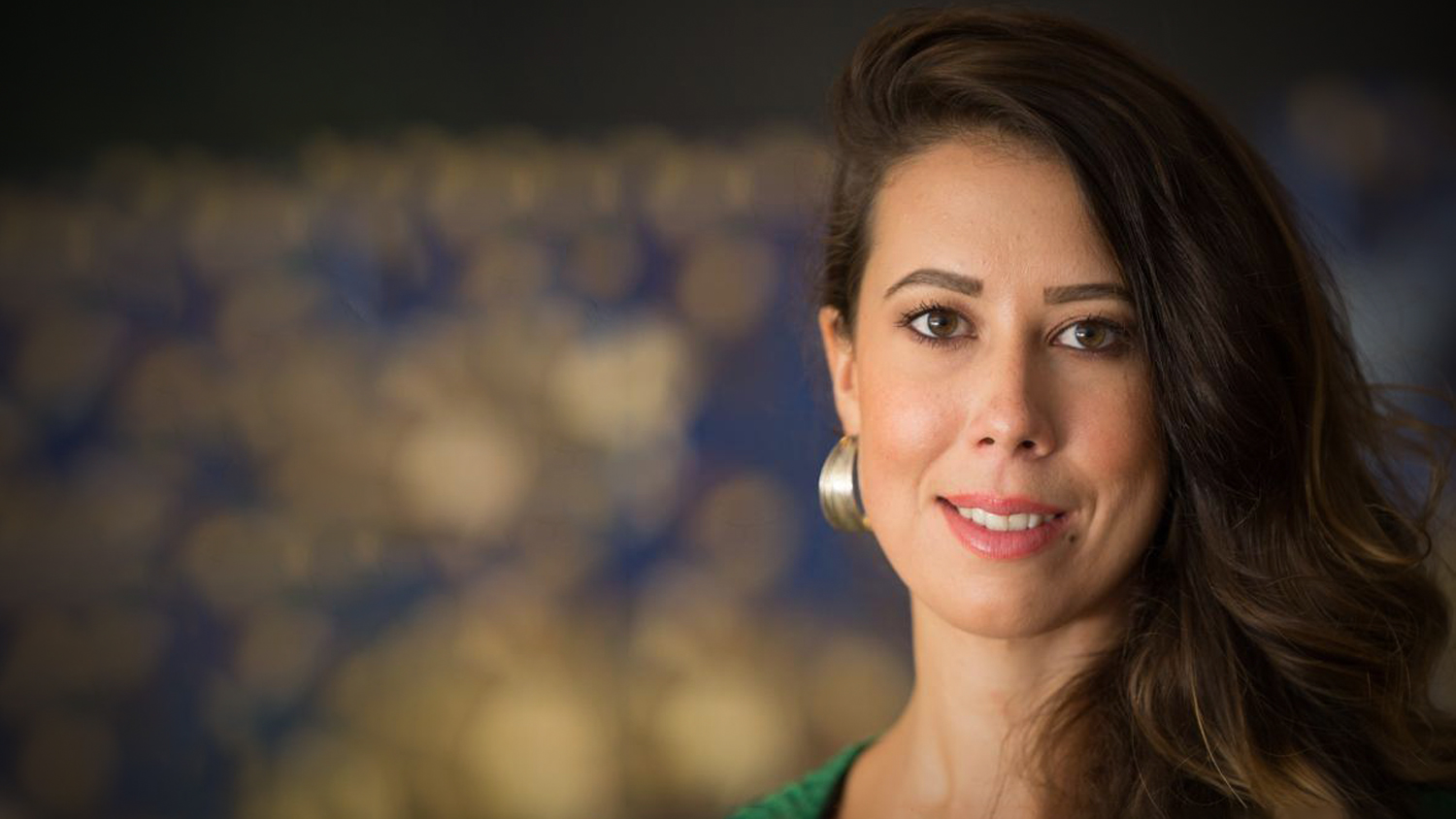Museums Victoria’s Senior Curator of South Eastern Aboriginal Collections, Kimberley Moulton, discusses the changes in the way museums are thinking about cultural objects and ownership, and how a deep and abiding love for Country and community underpins all her work.

What first drew you to work in curation?
My love for history, art and culture and writing drew me to curation, but I didn’t know what a curator was until I was out of university. It’s something I’ve learnt by doing.
I have always been drawn to history and objects. I grew up with stories of my family at Cummergunja Mission and as a child travelling up to Barmah and the Dungala (Murray) River, there was a place called the Darnyah Centre where we would stop every time. It was a Yorta Yorta cultural centre – it’s still there but in a different form. I have vivid memories of Dad showing us the photos of Nan and other relations, the canoe and snakes in bottles and the feeling of the place. Being on country and learning as a child, influenced by connection into history.
Dad was very proud of our Yorta Yorta history and was creative himself and my parents loved country Victoria and road trips to old homesteads and museums, so it was ingrained in different ways from a young age. I think that is why my practice has developed across historical collections and contemporary art and with a deep love for community.
You are taking part in Return to Country: Repatriation and Resilience, an upcoming panel exploring the importance of repatriating Aboriginal and Torres Strait Islander objects and ancestral remains from cultural institutions around the world. In your professional experience, how has the approach and attitudes towards repatriation evolved over recent years in Australian museums?
Because of the hard work by people before me in museums and cultural heritage I see that there is a shift in the way museums consider First Peoples’ cultural material and ideas around ownership, and their understanding about the deeply intrinsic cultural and spiritual connections these collections continue to hold for the communities they were taken from and the need to have them back.
There is a continuing awakening around the colonial and violent legacies of museums and collecting histories and the way in which these legacies perpetuate in these spaces. Even in the last ten years of being at Melbourne Museum there has been a dramatic shift in the way in which the museum wants to work with communities to return the belongings home. They see the benefit to community outweighs any reason to keep them in the collections. There is a shift globally in this thinking and some places are more progressive than others, but I do feel things are starting to change.
From your time working in and visiting museums overseas, how does the conversation around these issues differ in Australia? What are the similarities?
It is case-by-case, museum to museum. From a Museums Victoria perspective, the institution is fully supportive of repatriation of cultural material, and we are actively working on this. We have been working on the repatriation of ancestral remains for decades also.
There are different conversations to be had internationally; one of the biggest hurdles is that often these collections are very much entwined in the colonial histories of these countries, or the foundational collections of major institutions, so there is a layering of the idea that the objects themselves belong to the history of that country. It is complex and nuanced.
I believe progress starts with building relationships between curators, museums, First Peoples communities and creating dialogues of exchange. But it is difficult as there is so much labour – culturally, spiritually and emotionally – involved in this, but that is part of my work and others like me are the conduit between these spaces and histories.
The 2022 Reconciliation Week theme is Be Brave, Make Change. What changes would you most like to see in the museum and arts landscape to improve First Nations representation and access in museums and galleries?
I would like to see more supportive funding for arts institutions to focus on the repatriation, loan and exhibition of collections which are all forms of access. I would like to see more First Peoples in these spaces with training and support to create culturally safe team environments where we can work on experiences that celebrate who we are, look to our histories and futures and create global dialogues between Indigenous Peoples.
You are also Artistic Associate at RISING. What events are you most excited about in this year’s festival, and why?
All of it! It’s such a privilege to work with RISING, their artistic direction is phenomenal, and the program has something for everyone. I’m really excited for wurukur djuanduk balag—Ancestors Are Calling by Dr Lou Bennett AM which we will be presenting in Bendigo on 1 June and Melbourne Museum on 2 June. I worked with Lou in 2021 as part of the MOVING OBJECTS project I developed which supports collection access for First Peoples artists and a creative response. Lou worked closely with cultural belongings from her Dja Dja Wurrung Ancestors and has written a new piece of music in response to this. It’s going to be really special. Also, I can’t take my nephew to The Wilds and see his face at the installation!
Kimberley Moulton will be in conversation with John Harvey, Jason Tamiru and Daniel Harvey for Return to Country: Repatriation and Resilience on Tuesday, 31 May 2022 at the Wheeler Centre.
Related Posts

Read
Anne-Marie Te Whiu Receives The Next Chapter Alumni Poetry Fellowship
2 Apr 2024

Read
What's on in April: Resident Organisation Round Up
28 Mar 2024

Read
Blak & Bright First Nations Literary Festival returns in 2024
7 Mar 2024

Read
What's on in March: Resident Organisation Round Up
29 Feb 2024

Read
Hot Desk Extract: International
23 Feb 2024

Read
Hot Desk Extract: The Rooms
23 Feb 2024
Share this content